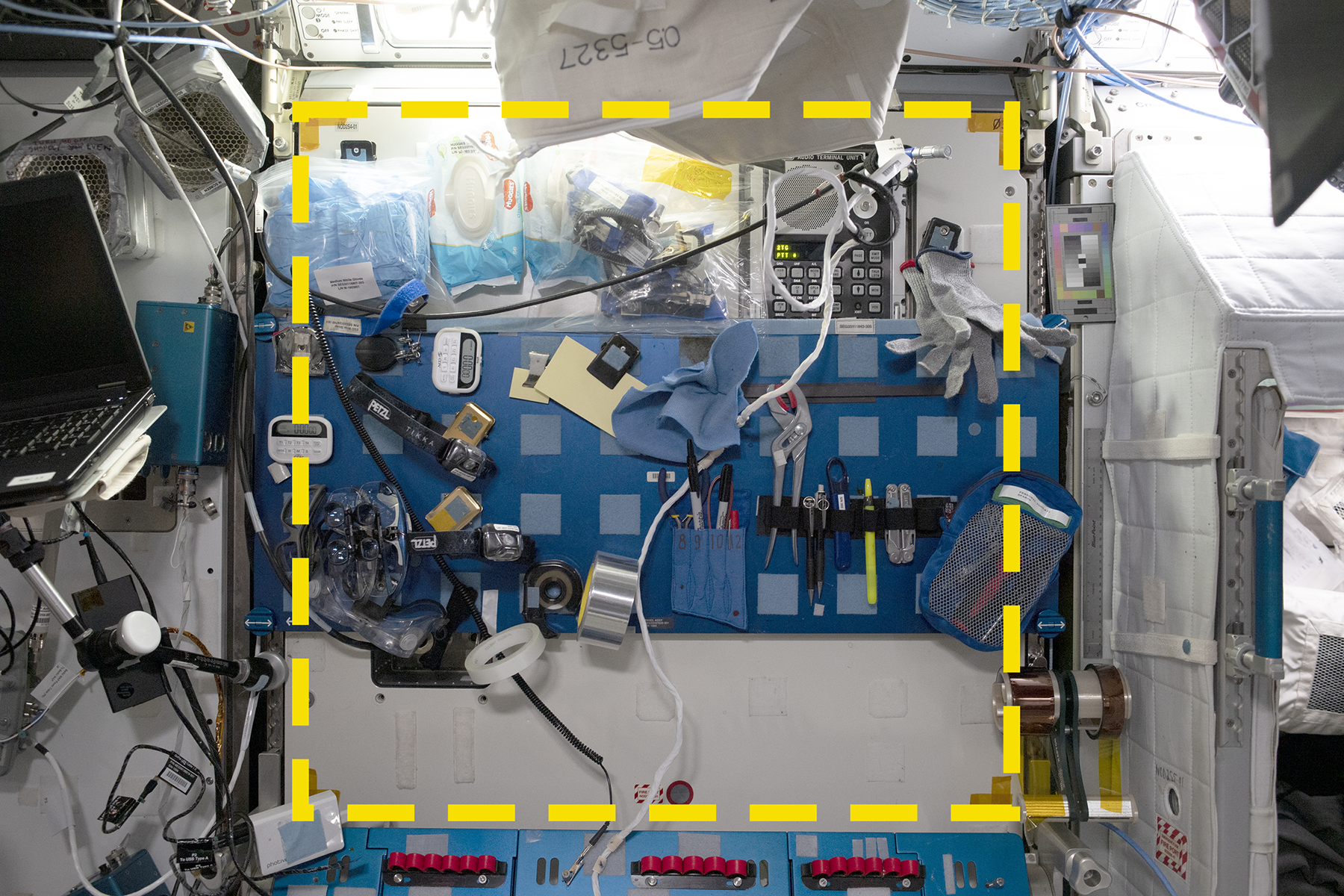Archaeology and outer space may not sound like they should mix outside of science fiction – but on board the International Space Station (ISS), the first-ever archaeological survey in space has been carried out.
The ISS is the largest and most intensely inhabited space station to exist so far, boasting over 270 visitors from 23 countries since it was launched in 1998. The strangeness of this artificial environment – its isolation, confined spaces, and the influences of microgravity – are unlike anything humans have evolved to experience.
Microgravity in particular introduces new ways of experiencing an environment, as it introduces opportunities to move and work in 360 degrees and to carry out experiments that would be impossible on Earth. But there are limitations too – the low gravity means objects float around if they are not restrained. This means that even the most routine activities that someone will perform on Earth have to be carefully planned out and often require technological interventions to assist.
How do people adapt to living in such odd environments? Over the last two decades, interviews with crew members have provided some insights into how individuals cope with this experience, but interviews cannot capture everything.
In order to understand the nature of this “microsociety in a miniworld”, researchers launched the International Space Station Archaeological Project. This project uses an archaeological framework to study how people use areas of the space station by considering their materials as artifacts.
“While it is possible to interview crew members about their experiences, the value of an approach focused on material culture is that it allows identification of longer-term patterns of behaviors and associations that interlocutors are unable or even unwilling to articulate”, the team explains in their new paper.
At the same time, they wanted to develop archaeological techniques that permit the study of other habitats in remote, extreme or dangerous environments.
Their first direct work on the ISS, which happened in 2022, involved the adaptation of a traditional archaeological strategy called “the shovel test pit”. This technique involves digging small pits at intervals across a site in order to assess how artefacts are distributed. This helps researchers decide which areas to focus on for more extensive excavations.
In this case, digging on the ISS would not be easy or advisable, so the archaeologists asked the crew to document six locations across the station and to take daily photos of each location for 60 days.
One of the sample locations selected for the ISS study- this is Square 03 in the starboard Maintenance Work Area.
“Since it is too costly and difficult to visit our archaeological site in person, we have to creatively re-imagine traditional archaeological methods to answer key questions”, the team explains.
The researchers have now published the results of the first two of the six sample areas that have been documented. These areas included one designated for equipment maintenance, and another near the latrine and exercise equipment.
Analysis of the photos in both areas, which was performed using a novel open-source image platform developed by the team, revealed 5,438 instances where “artifacts” were used for varied purposes, such as writing tools, Post-it notes, and an augmented reality headset.
The results demonstrate discrepancies between the intended and actual use of certain areas aboard the ISS. A cross-reference of the photos with astronaut activity reports showed that the area near the exercise equipment and latrine was used as storage sites for toiletries, resealable bags, and a rarely used computer. However, the area was not officially designated for this purpose.
The equipment maintenance area was mostly used for storage as well, with little or no maintenance activities being carried out there.
Ultimately, the study demonstrates how archaeological techniques can be used and adapted to study remote locations, such as the ISS. It also shows that the designers of future space missions should consider how designated areas of a station or similar space can be clearly defined in terms of their intended function.
As the authors add in a statement, “The experiment is the first archaeology ever to happen off of the planet Earth. By applying a very traditional method for sampling a site to a completely new kind of archaeological context, we show how the ISS crew uses different areas of the space station in ways that diverge from designs and mission plans. Architects and planners of future space stations can learn valuable lessons from this work.”
The study is published in the journal PLOS ONE.
Source Link: First-Ever Archaeological Survey In Space Carried Out On The ISS
